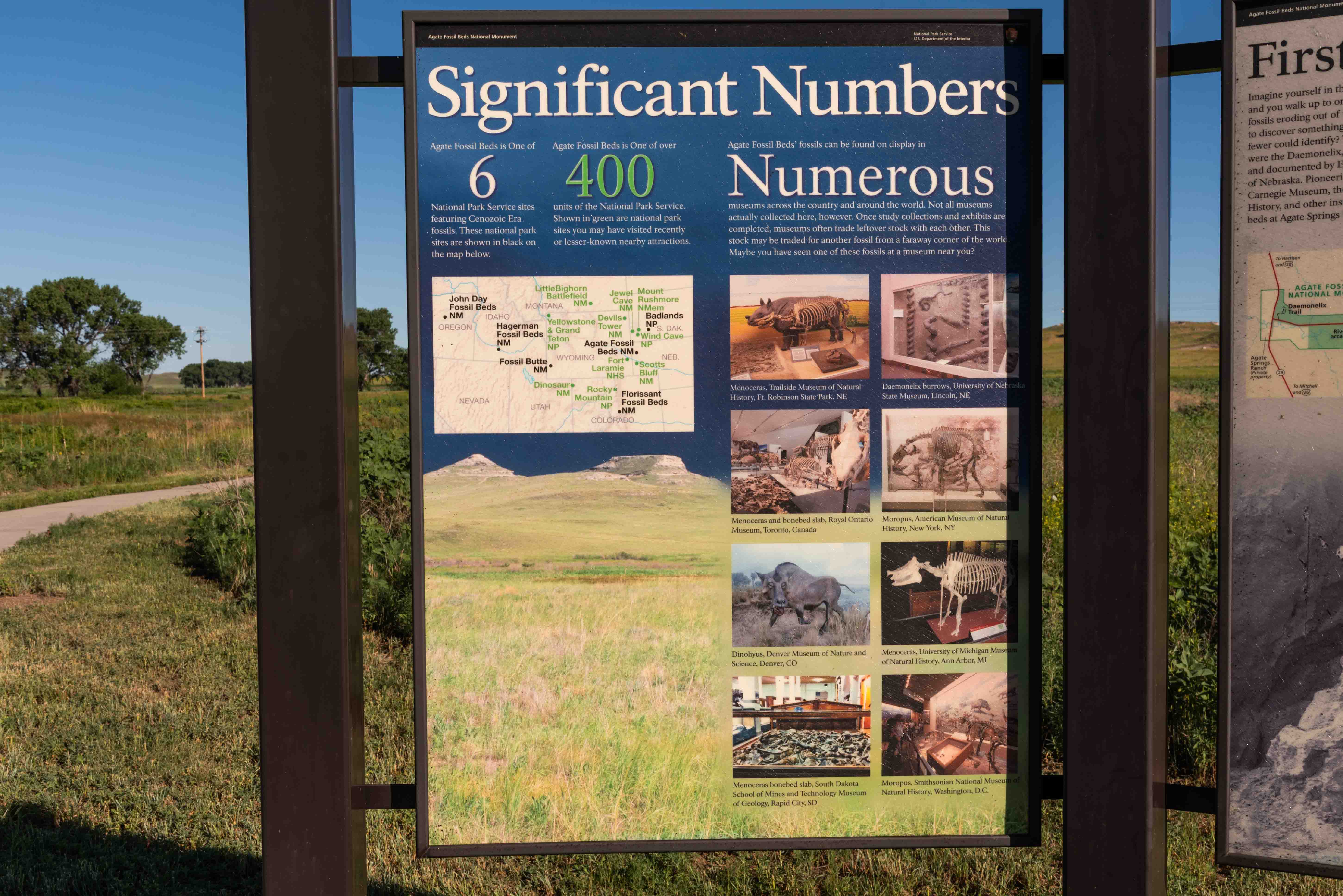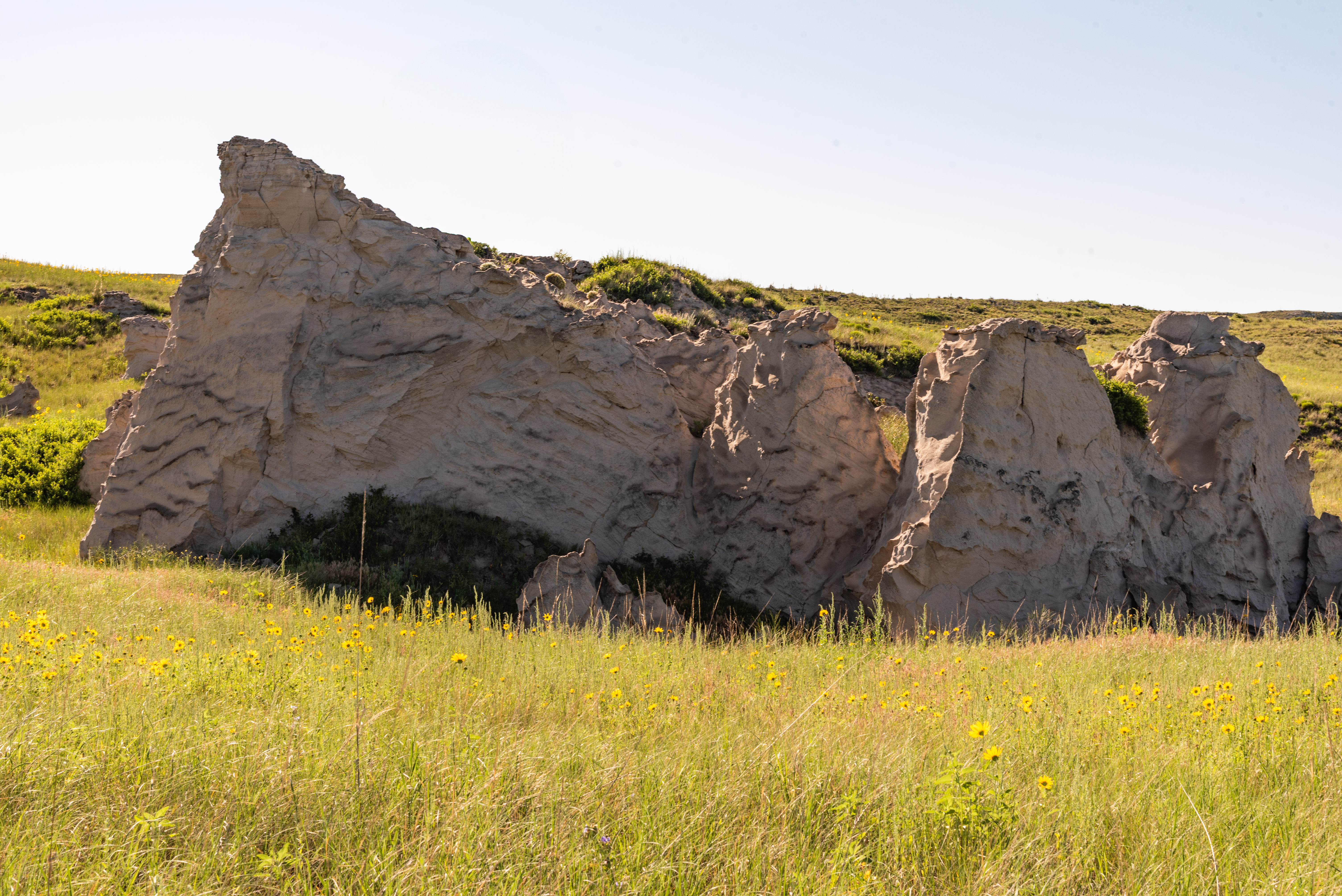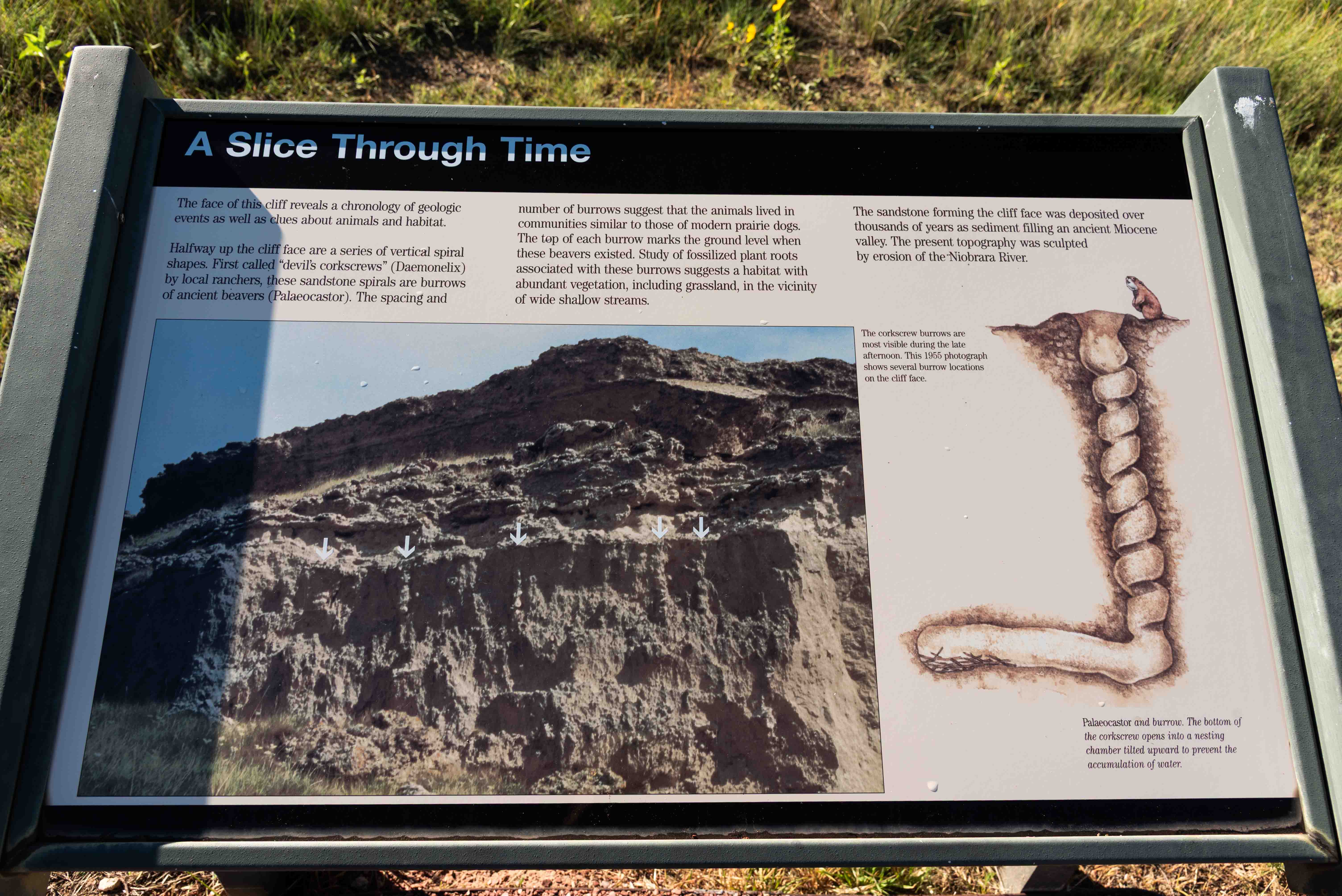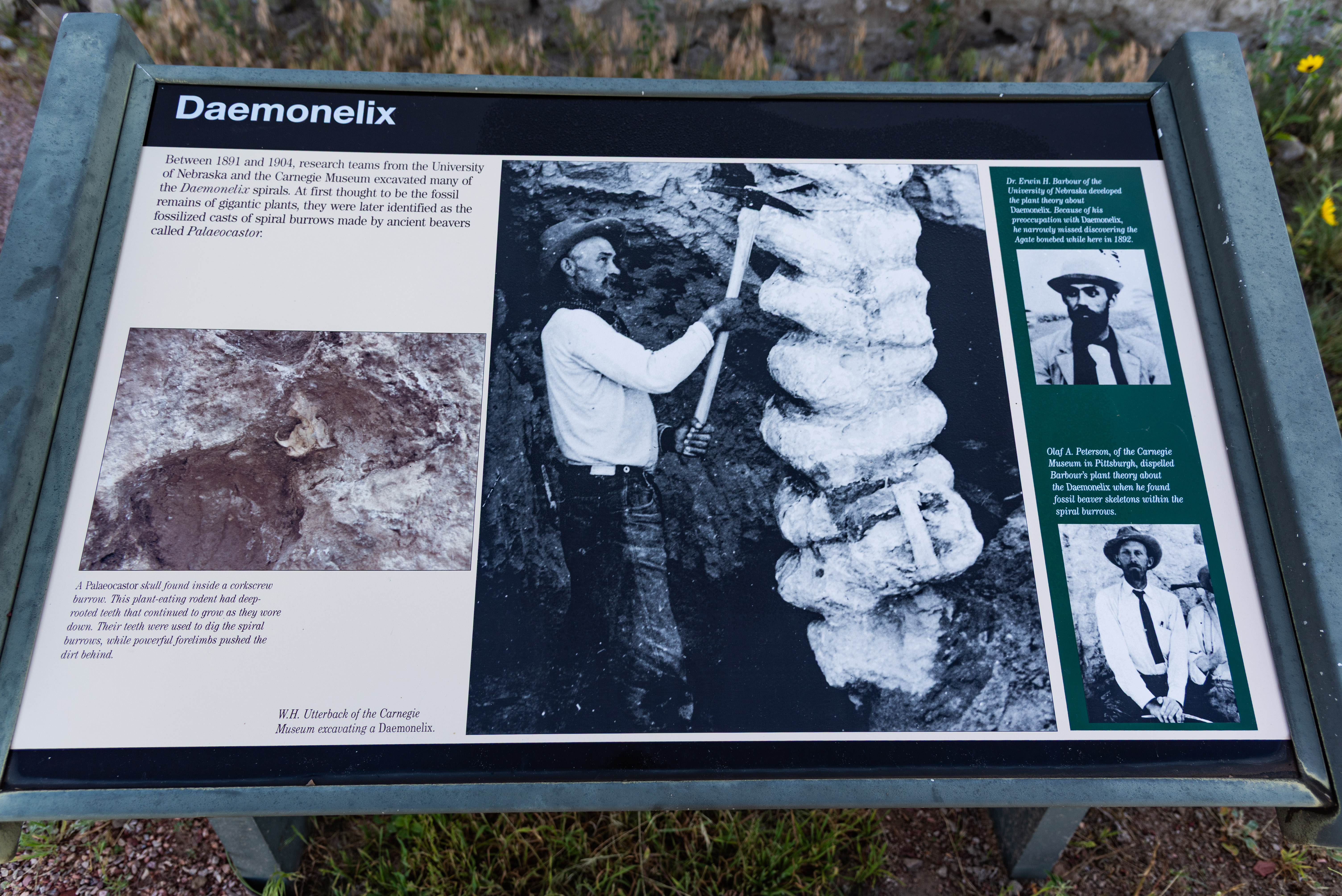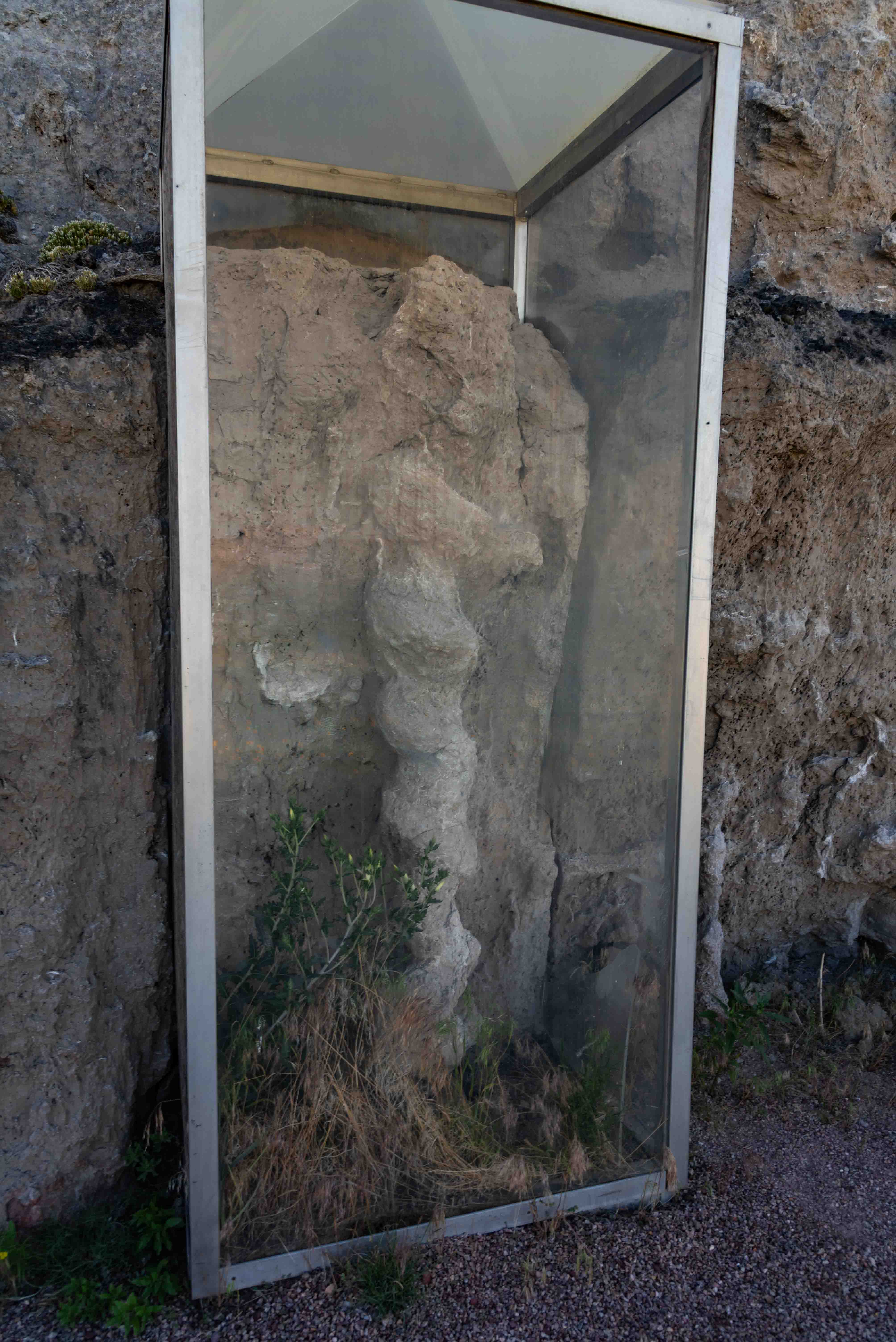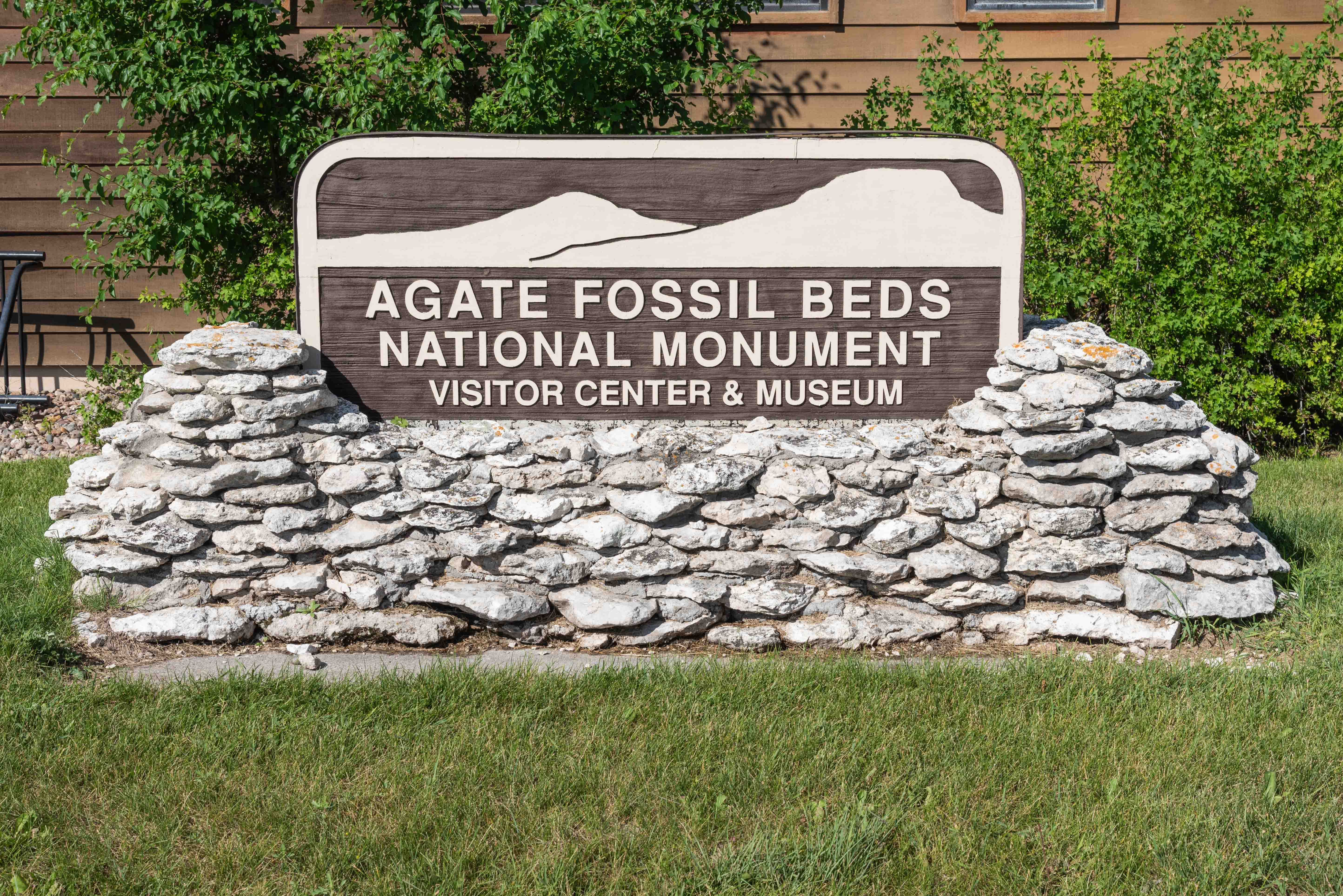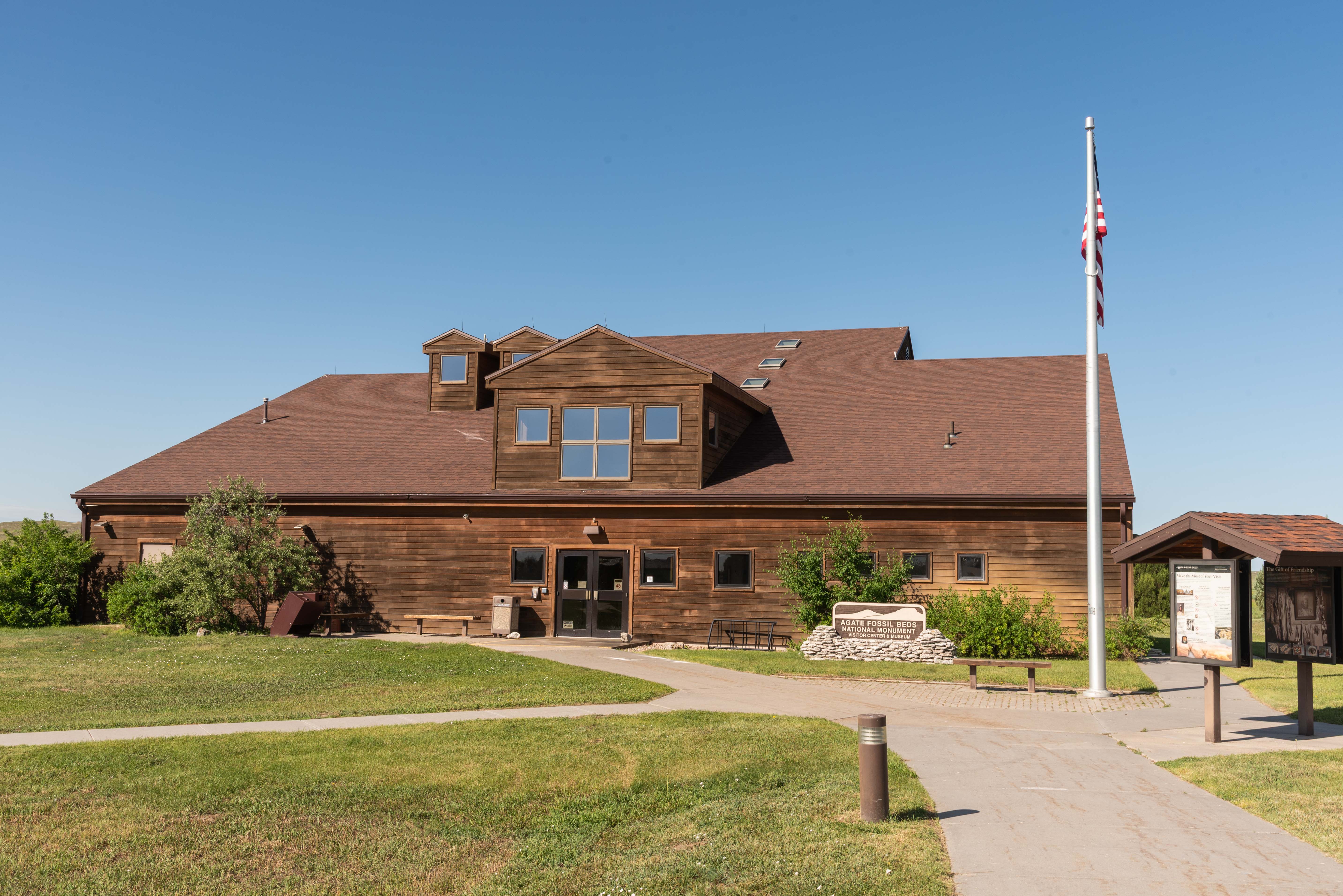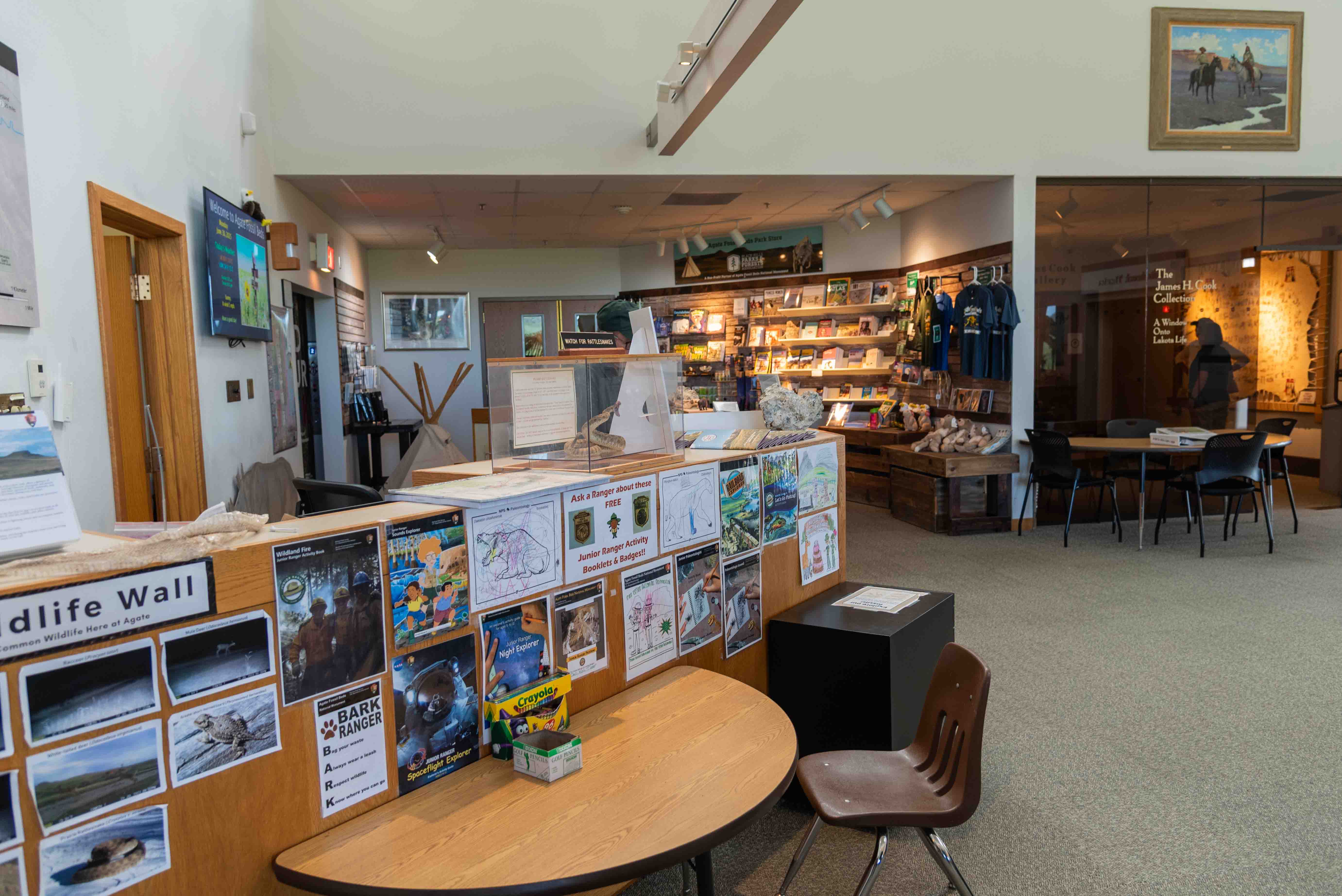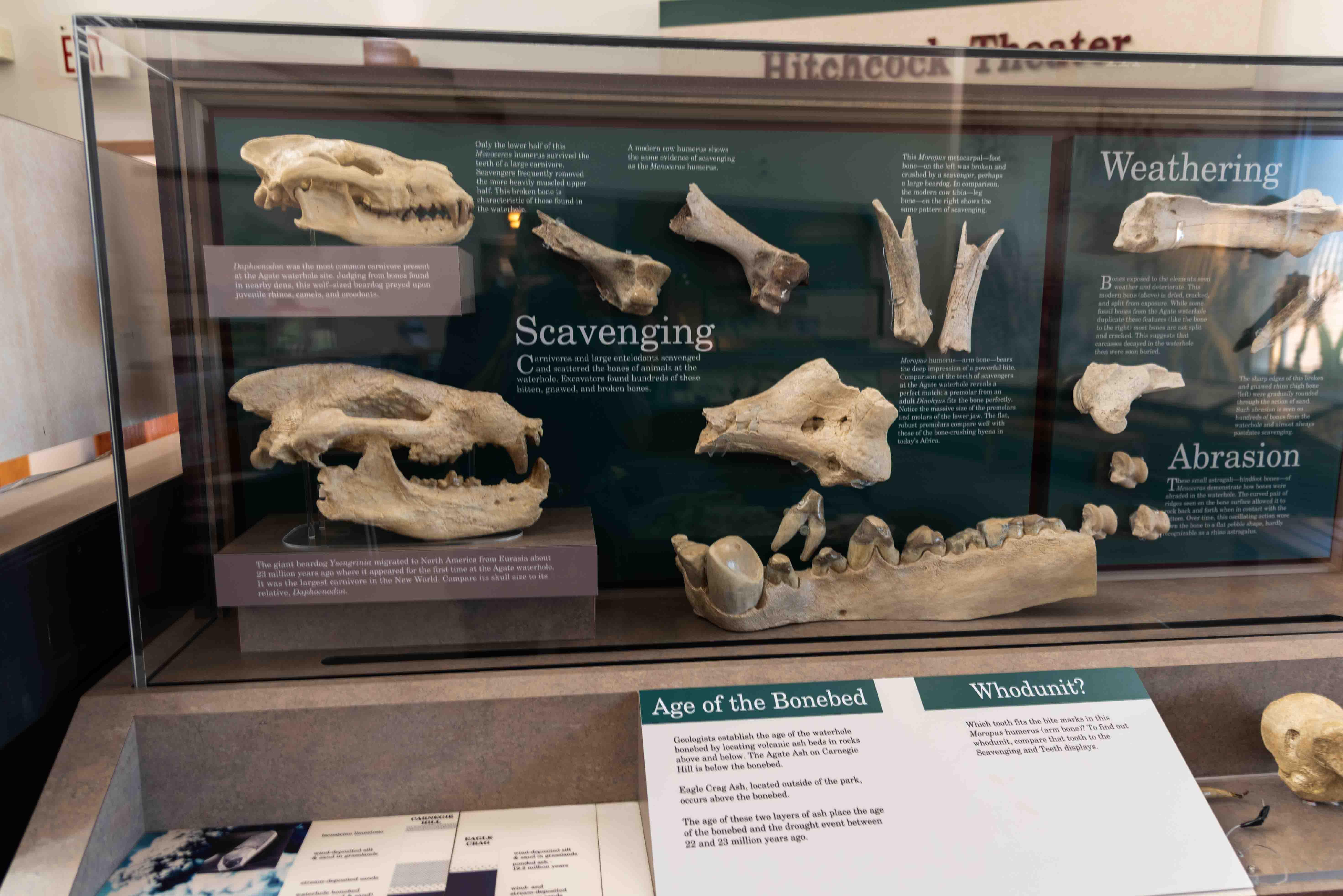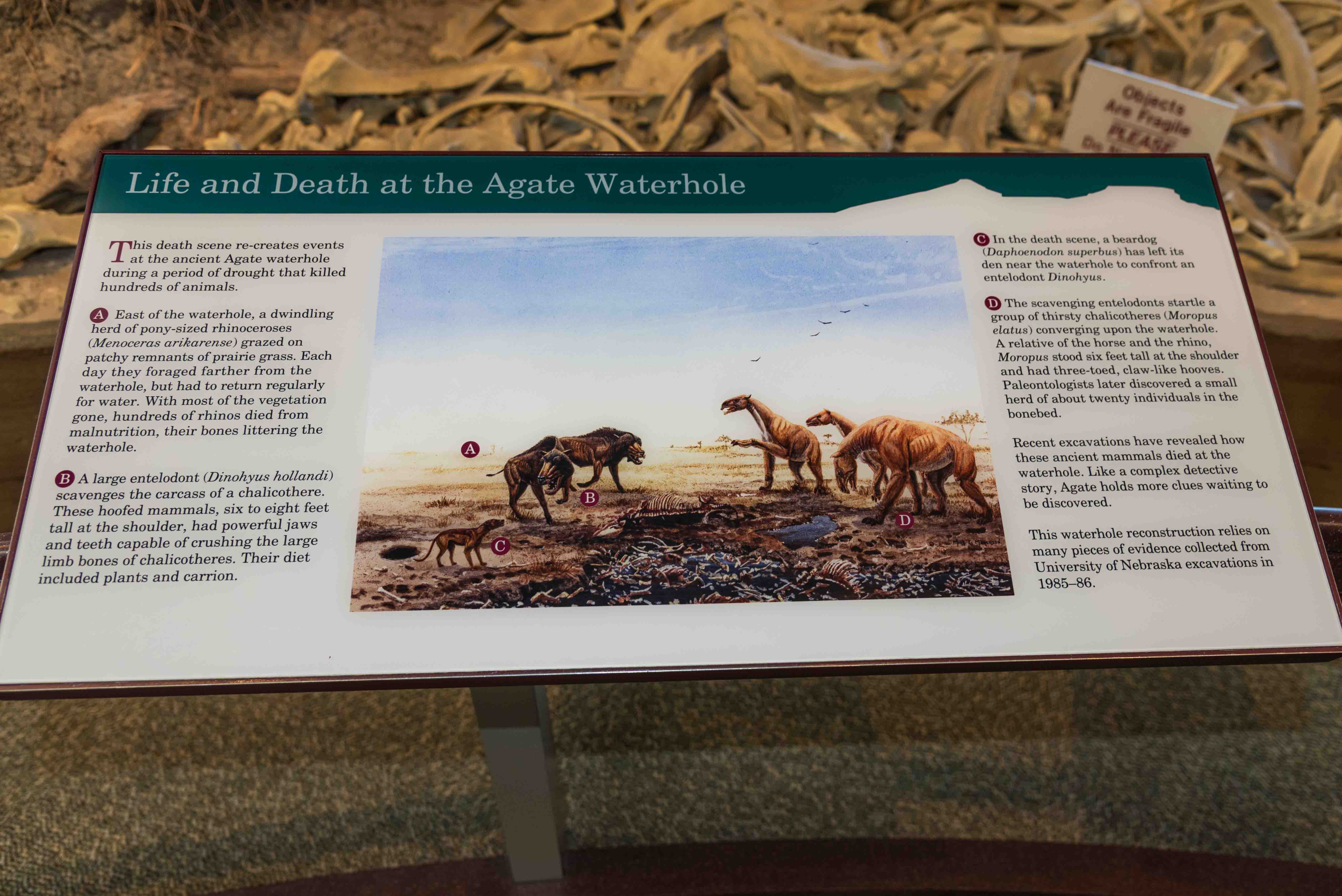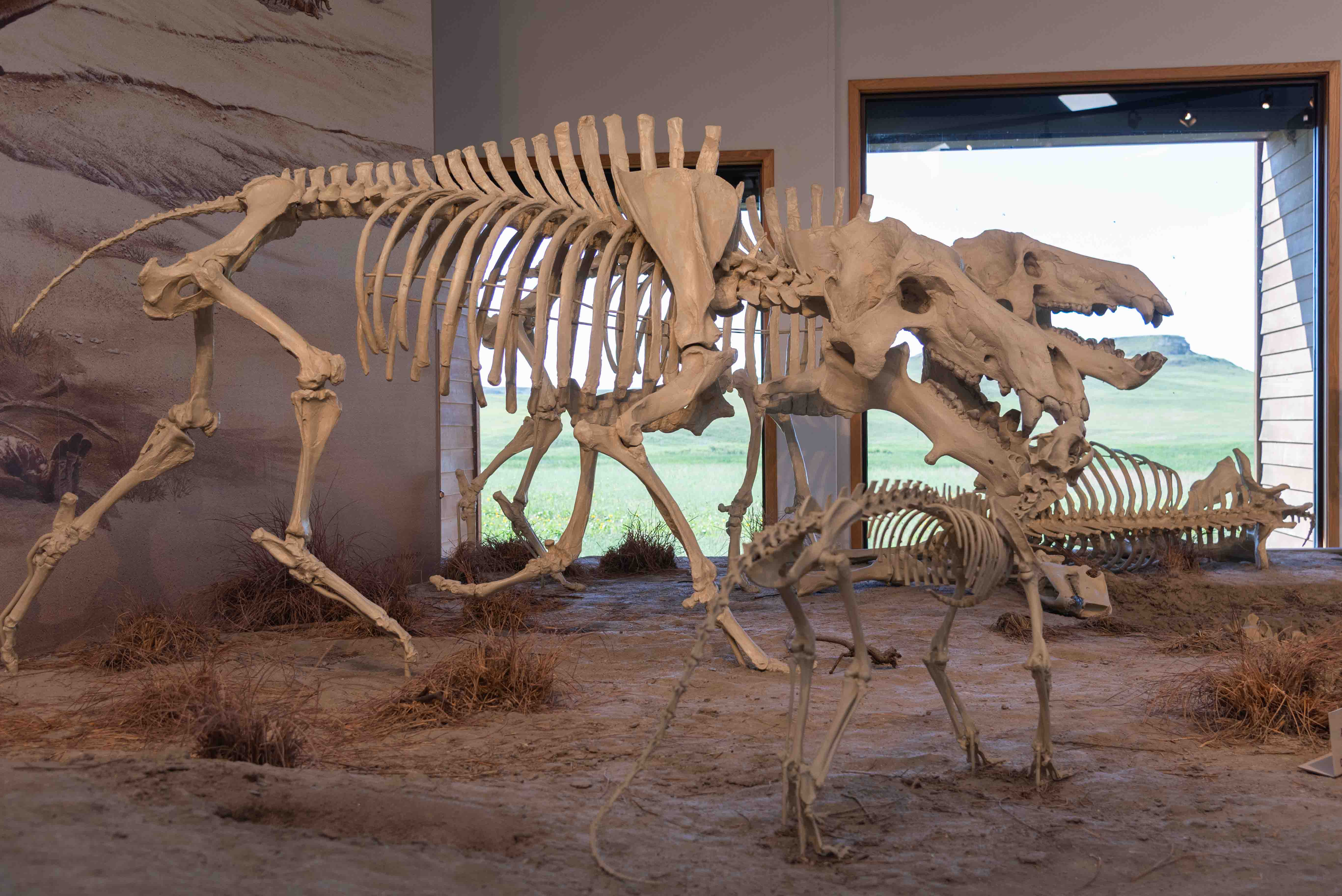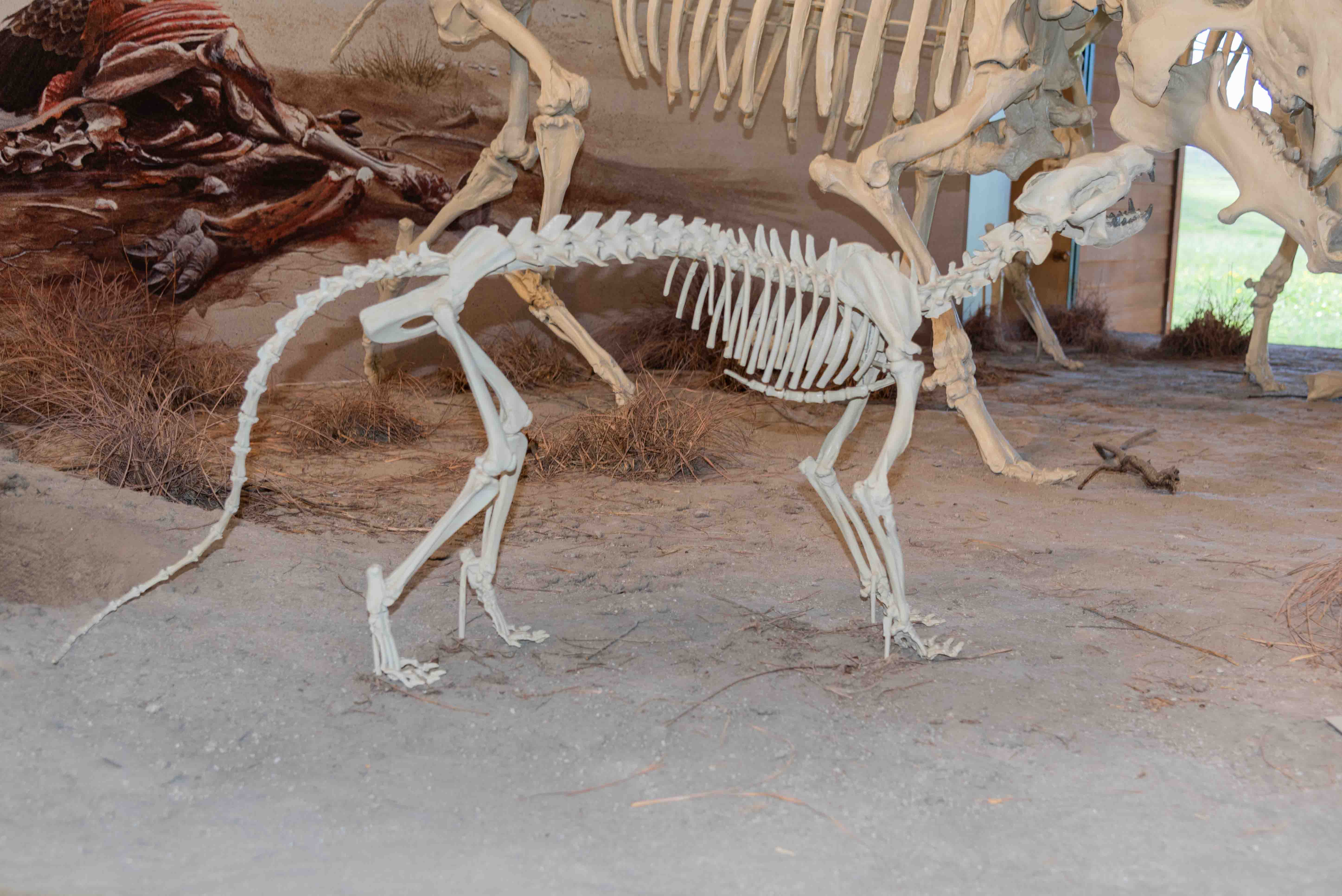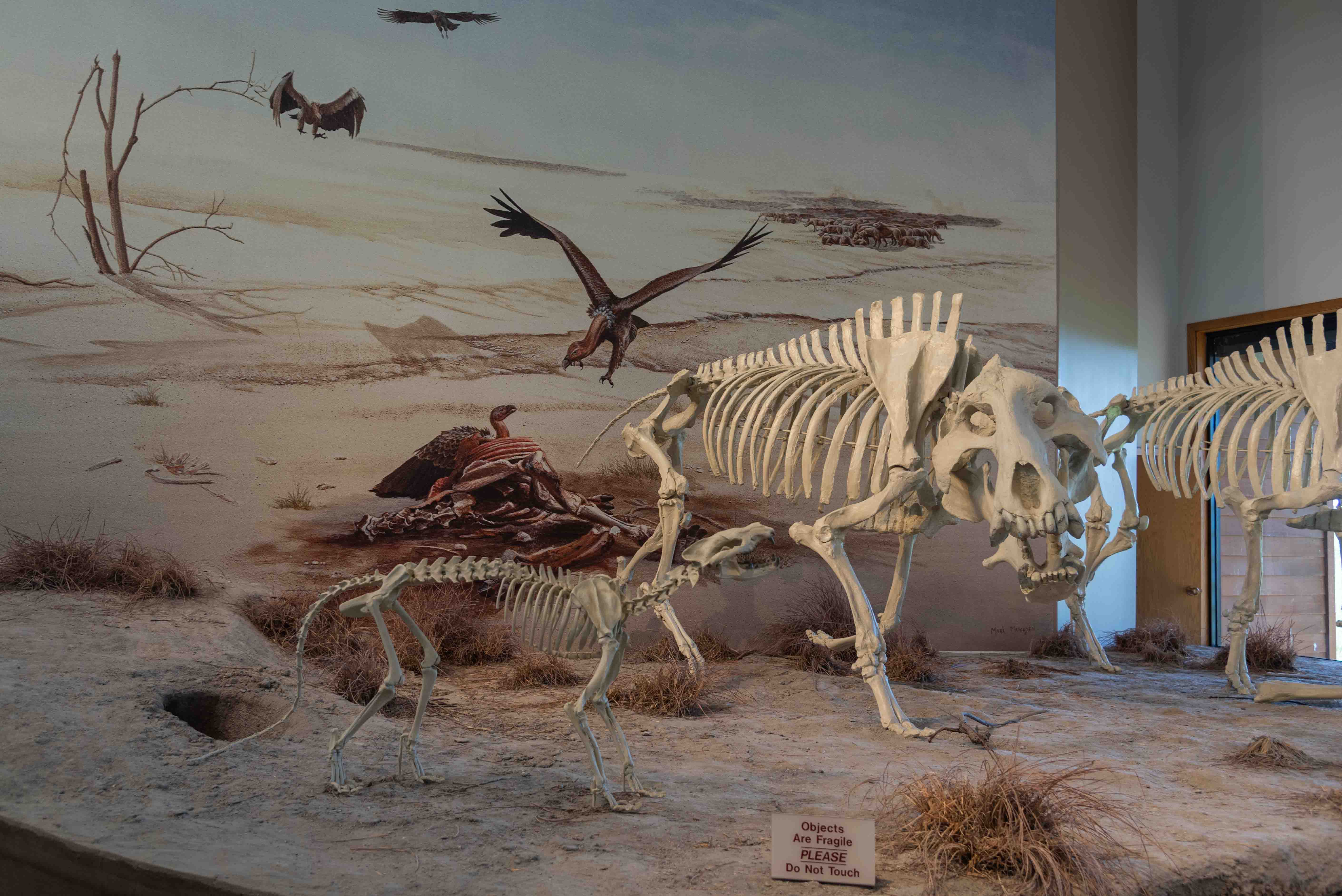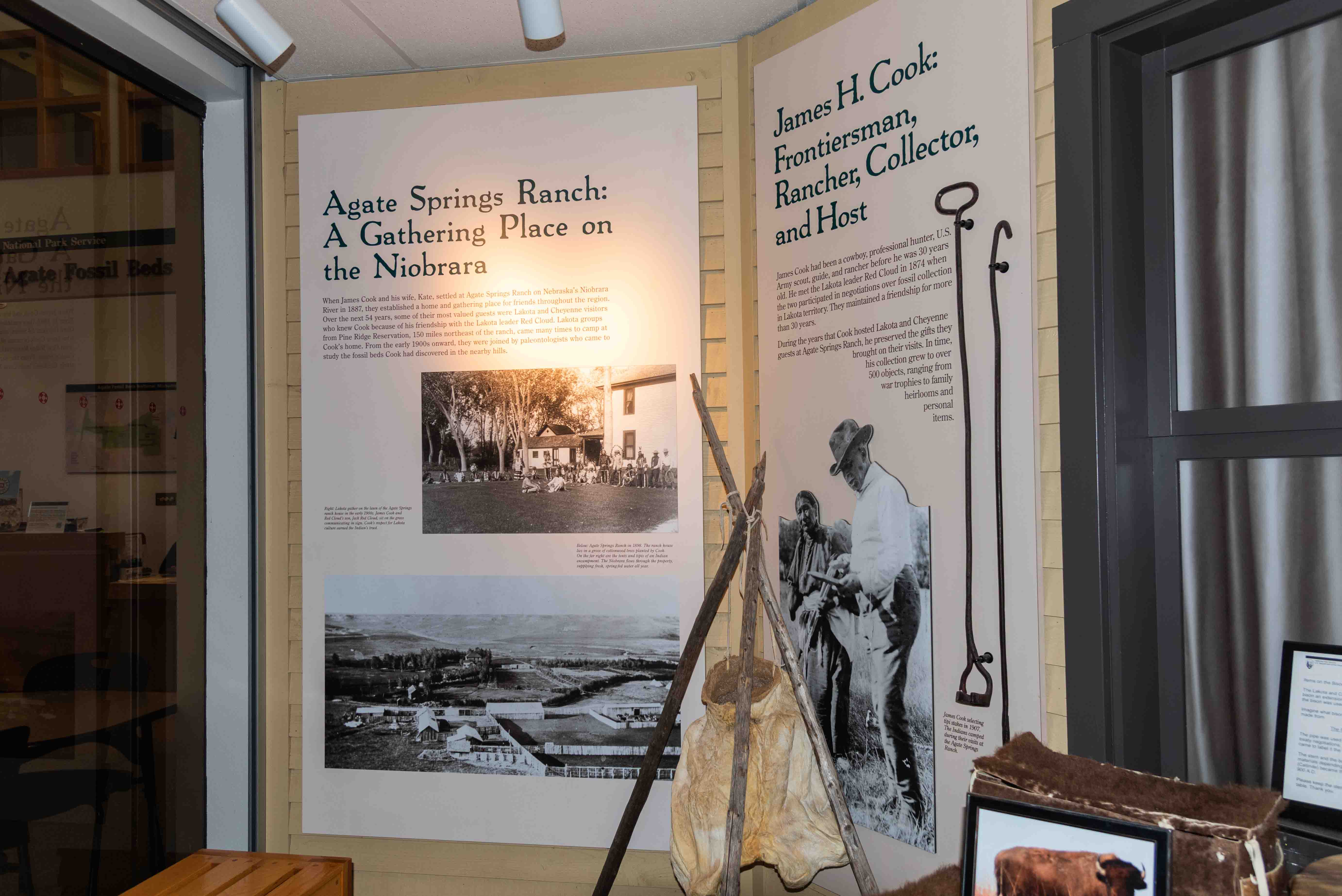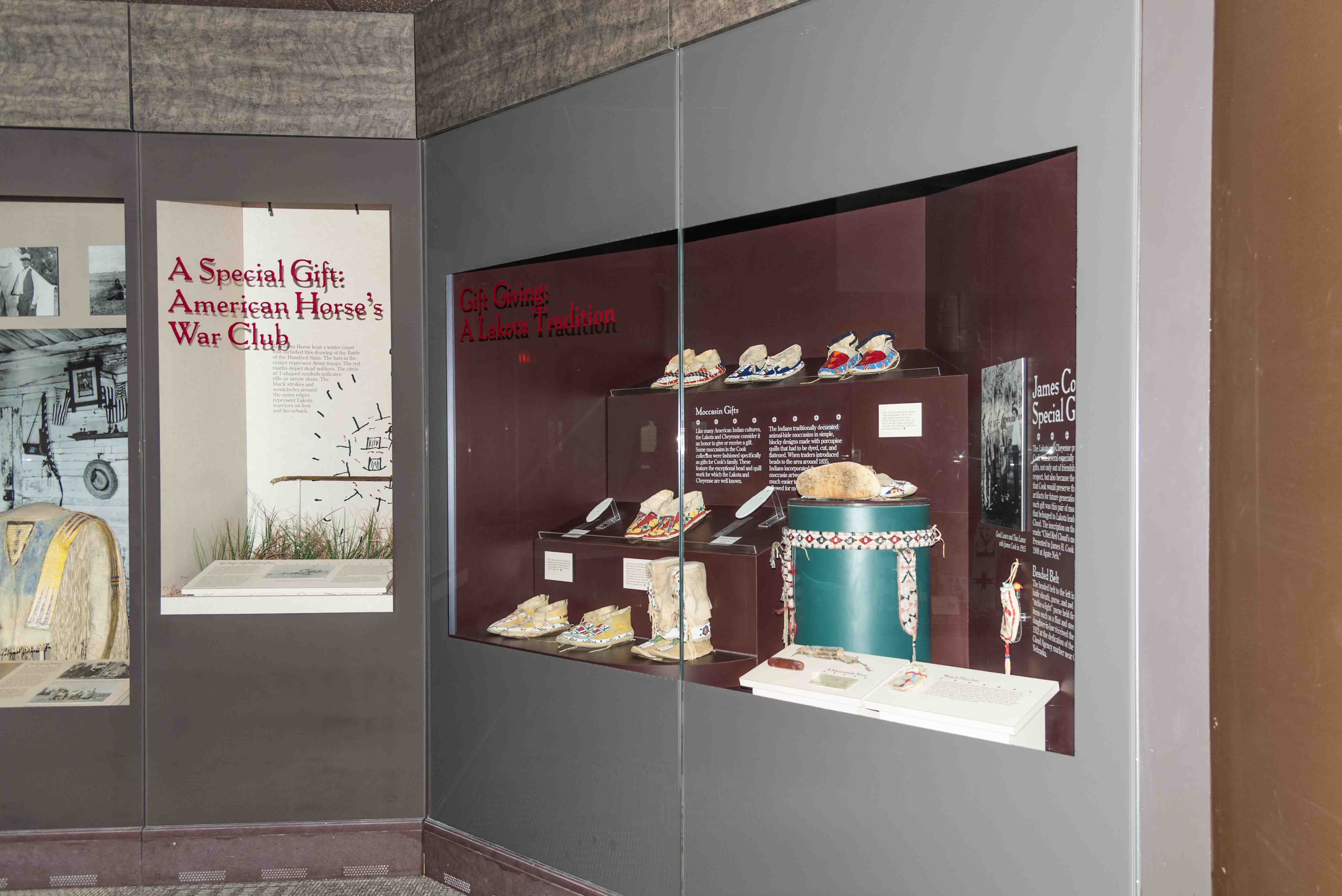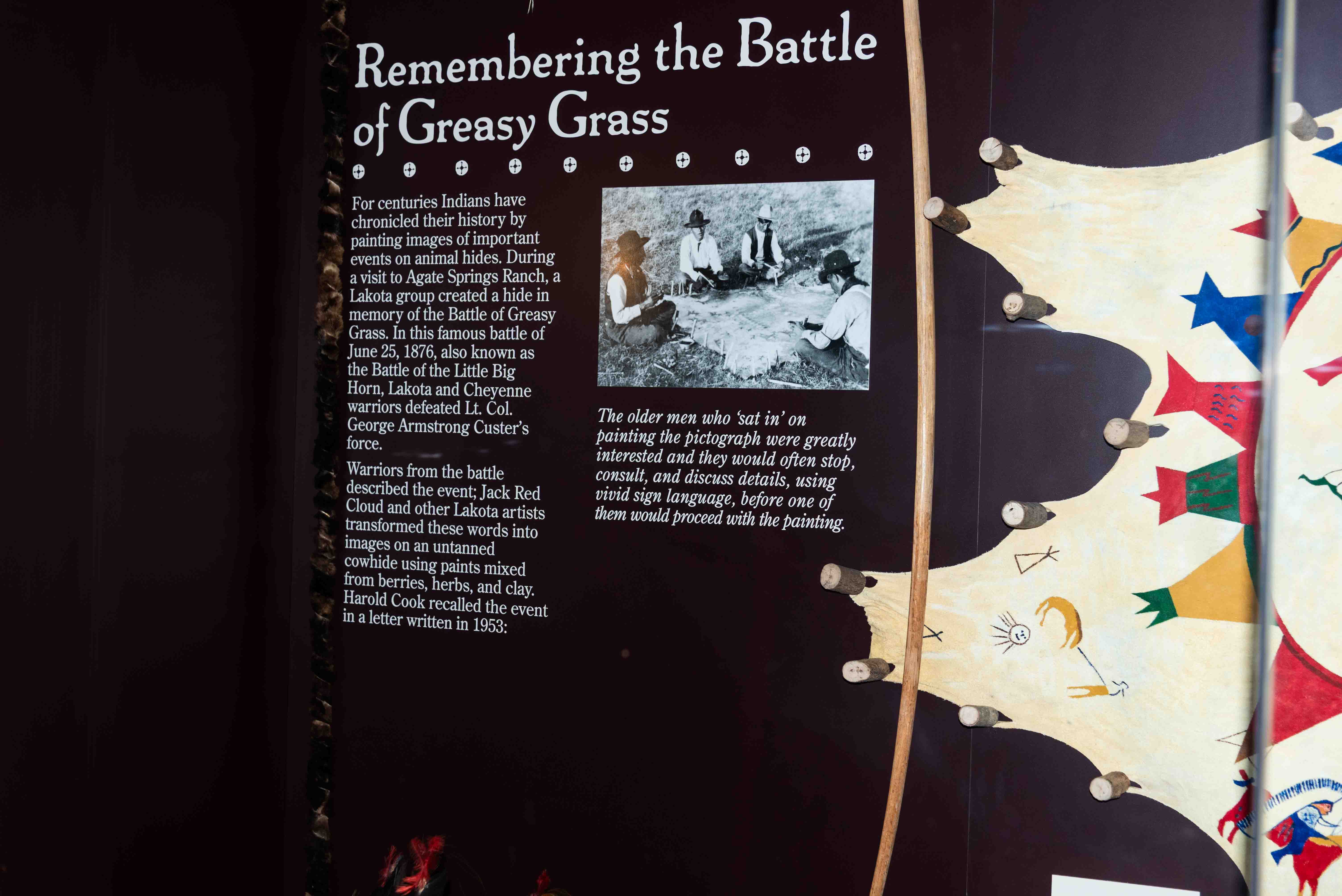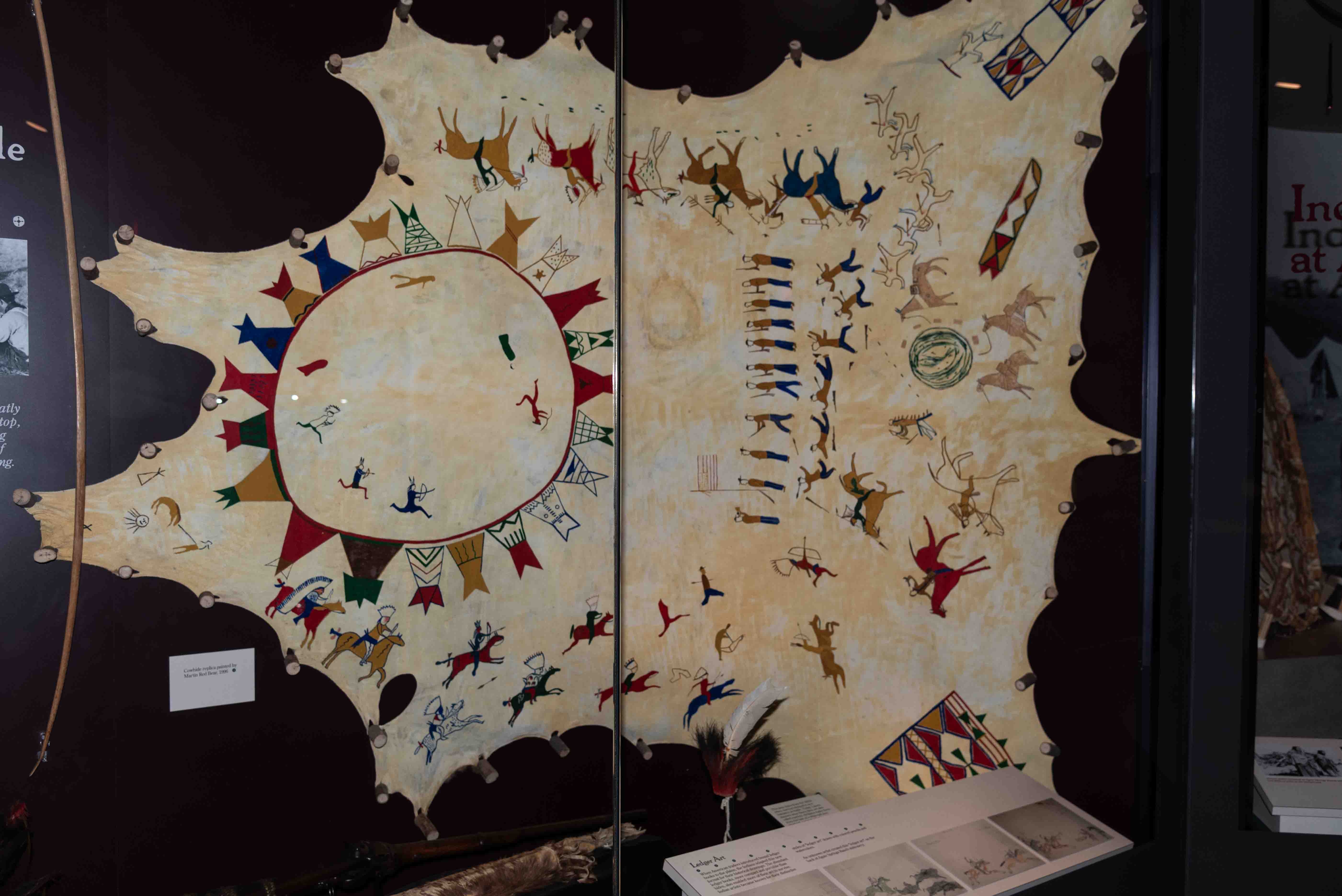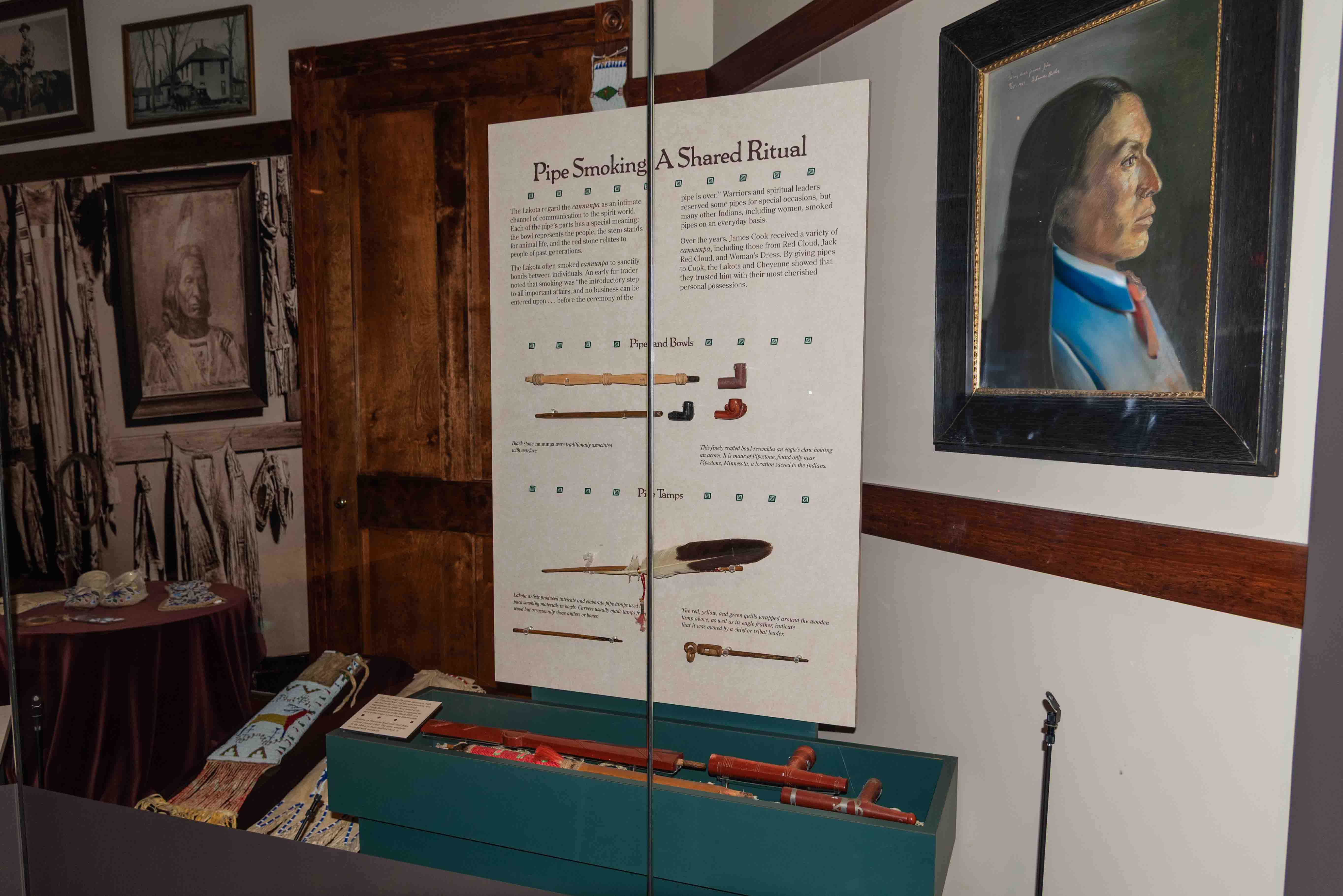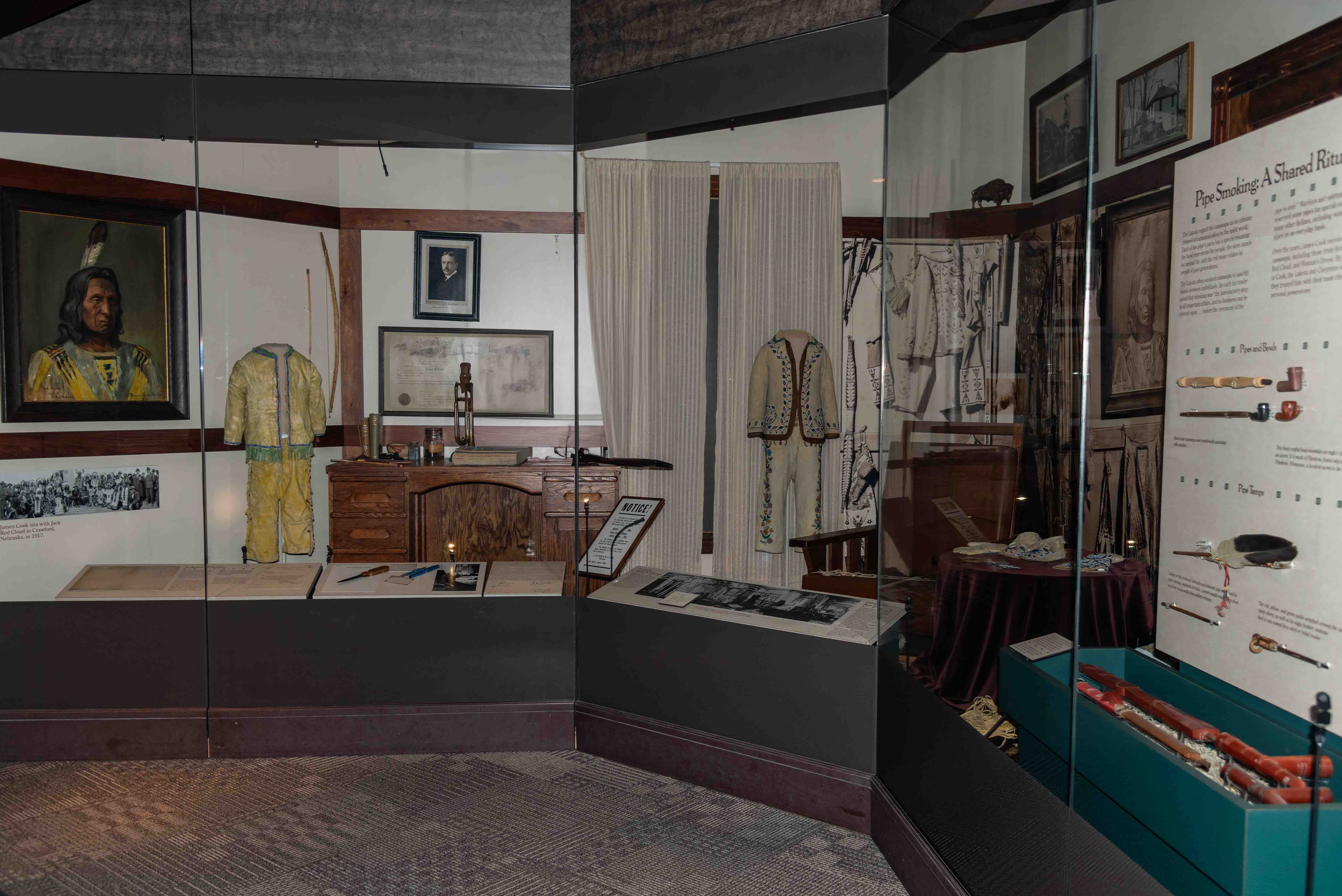Agate Fossil Beds National Monument
Agate Fossil Beds National Monument was established June 14, 1997.
The monument includes a valley of the Niobrara River and Carnegie Hill and
University Hill. A large number of well-preserved mammal fossils have been quarried
from sites on the two hills. Paleontologists have recovered some of the world's best preserved fossils
of Menoceras, Moropus, and Dinohyus from the Miocene Epoch (roughly 23 to 5 million years ago).
A special exhibit at the visitor center also chronicles the friendship between rancher
James Cook and Lakota Chief Red Cloud.
The 2.7 mile Fossil Hills Trail runs from the visitor center to excavation sites on Carnegie Hill.
There is about 250 feet of elevation gain. About halfway along Fossil Hills Trail a side trail leads
to Bone Cabin, the homestead of Harold J. Cook, the son of James H. Cook (of whom we will
talk later). The Harold J. Cook Homestead (Bone Cabin Complex) was listed on the National Register
of Historic Places in 1977. I visited Agate Fossil Beds National Monument in June, 2025.
Daemonelix Trail
The Daemonelix Trail is an easy one mile loop trail at the entrance to
Agate Fossil Beds National Monument. The trail passes some interesting
paleogeology before arriving at the Daemonelix exhibits. FYI a Daemonelix
is a fossilized spiral burrow of the prehistoric beaver, Palaeocastor.
Visitor Center and Museum
Agate Fossil Beds National Monument is located 25 miles south of Harrison, NE on NE Highway 29.
The park and visitor center is open year round, although summer and winter hours are slightly different.
There is no fee to visit the park. The visitor center houses the museum, special exhibits, restrooms, and
gift shop.
The Agate Waterhole Actors
Daphoenodon superbus (Beardog) - carnivore of the early Miocene
Dinohyus hollandi - omnivorous mammal of the Miocene
Dinohyus was the largest of a group called entelodonts related to pigs
Moropus elatus - herbivorous mammal - Miocene
Morpus belonged to a group called chalicotheres related to horses, rhinos and tapirs
Miocene Epoch - 23 to 5.3 million years ago
The James H. Cook Collection
In 1887 Kate Graham and her husband, "Captain" James H. Cook,
purchased the Graham's 04 ranch and named it Agate Springs Ranch. Cook continued to ranch
at Agate Springs until his death in 1942. He was very good friend with Lakota Sioux chief Red Cloud
and was often visited by the Sioux and Cheyenne. He received many gifts as tokens of their friendship.
These gifts are now priceless Indian artifacts that are curated in a collection
at the Agate Fossil Beds National Monument museum.
Background information obtained from Wikipedia, agatesprings.com, and National Park brochures.
Use the form on the Home Page to submit comments, questions, or suggestions. TD Productions Copyright © 2025

